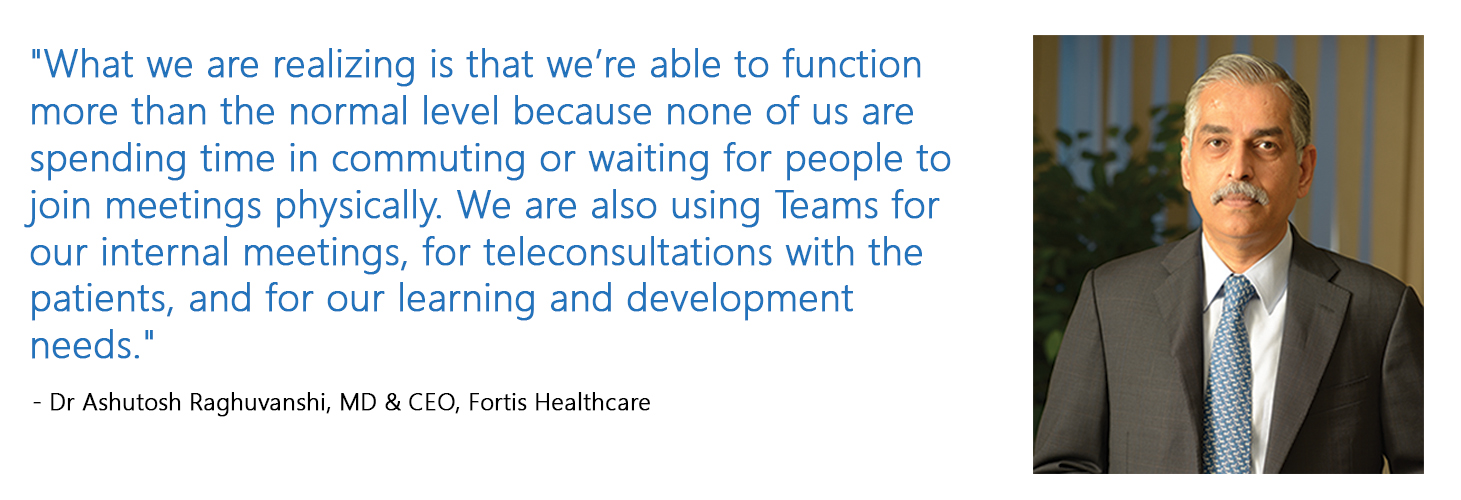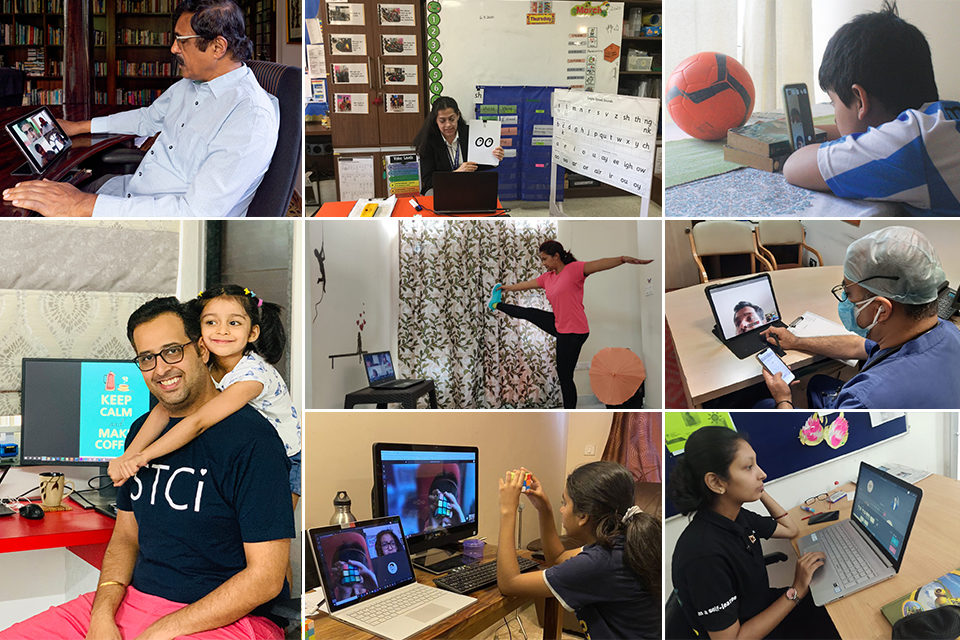By Samik Roy, Country Head, Modern Workplace, Microsoft India
 Ensuring employee productivity can be a challenge. It requires focusing on keeping things efficient, stripping out non-essentials and finding ways to streamline processes.
Ensuring employee productivity can be a challenge. It requires focusing on keeping things efficient, stripping out non-essentials and finding ways to streamline processes.
In India, productivity at work has often been equated to one element – time. At a time of COVID-19 where businesses and people are figuring out new ways of working, this year’s World Productivity Day presents an opportunity to take a step back, re-look how we manage productivity and seek ways to establish a “win-win” relationship, where employees make the most of their days and businesses improve their bottom line.
Emerging productivity trends
Earlier this year, Microsoft’s Work Trend Index explored how people are learning to connect as a team when they need to work apart and use several tools to remain productive. The quest for human interaction was strong. The report revealed that the number of people turning on video in Microsoft Teams meetings had doubled from before working from home became mainstream. In fact, total video calls in Teams grew by over 1,000 percent in March 2020. People in India used video in 22 percent of meetings. However, this may be attributed in part to less access to devices and stable internet. There was also a considerable increase in Microsoft Teams usage on mobile devices such as phones or tablets demonstrating the flexible work arrangements that were taking root.
Many organizations across India are seeing the benefits of adopting Microsoft Teams. “We had this tool even before the current situation, but the usage was very low in our organization. But we are glad that we had this, because if we didn’t have this medium available to us, we couldn’t have functioned even at the normal kind of level. What we are realizing is that we’re able to function more than the normal level because none of us are spending time in commuting or waiting for people to join meetings physically. We are also using Teams for our internal meetings, for teleconsultations with the patients, and for our learning and development needs,” said Dr Ashutosh Raghuvanshi, MD & CEO, Fortis Healthcare.

In sectors like manufacturing, there was initial apprehension around remote work. Dr Pawan Kumar Goenka, CEO & Managing Director, Mahindra and Mahindra Ltd. said, “Everybody is talking about the new normal. Some significant, remarkable, positive changes are happening as we move forward. Work from home will not be a taboo anymore, even for manufacturing companies like Mahindra and Mahindra. Having more digital connect, virtual meetings, people not travelling will become a very comfortable thing. Someone like me who travels 40% of the time, if that comes down to 20% that saves me one day a week, and we all know what that can mean.“
The British School in New Delhi has been one of the frontrunners in online learning in the country. Vanita Uppal OBE, director of The British School, said, “This process has shown the value of interaction and engagement that technology can enable; it has really been made abundantly clear. This is the tipping point. It is going to be the new normal.”
Each person, however, achieves productivity differently. The larks of the world are more productive in the morning, while night owls are better focused and unleash their creativity in the evening. In the month of March 2020, the average time between a person’s first and last use of Microsoft Teams each day increased by over one hour. This data does not necessarily mean people were working more hours per day, rather that they are breaking up the day in a way that works for their personal productivity or makes space for obligations outside of work.
Boosting productivity during COVID-19
Productivity involves efficient collaboration and effective communication in a secured environment –from a single user interface. It encompasses not just meetings, calling, chatting, audio or videoconferencing but also focuses on teamwork, including assigning and closing action items via workflows, sharing and co-authoring documents across geographic boundaries seamlessly as well as deploying no/low code business process applications. In the world of COVID-19, where everything we have known and grown accustomed to is thrown into a state of flux, businesses need to find ways to continue empowering employees to stay productive and happy:
- Enable flexible working
Employees may want the ability to work more flexibly to fit work commitments around their home life. Employers must trust their employees to get work done and know that this flexibility and trust can lead to improved productivity. Companies that did not have flexible working policies pre-COVID should think hard about its implementation as remote working becomes a way of life. Depending on the nature of one’s business, companies need to closely examine their existing operating models and identify how they can best enable flexible and remote working arrangements, alongside office layout revamps and modernized customer engagement practices.
- Understand work styles
Employees like to work in a vast range of ways, and they need the right tools to enable them to do their best. Understanding differences in work styles, personality types, skillsets and generations is vital to bringing out the best in people. Some do better in groups, while others thrive in isolation – some may prefer traditional forms of communication such as email, while others can unlock new ideas with the help of more fluid collaborative tools. Depending on one’s job function, employees need to be provided the right tools and training, setting them up for success in a hybrid working world.

- Use universal tools
It is important to ensure members of the team do not get cut off by technology. For those who are used to traditional ways of working, any new technology must be easy to access, else people are at risk of being left behind. Inclusion of diverse employees keeping in mind accessibility requirements is a key priority. Employees need to be empowered by technology – from cloud-enabled solutions and mobile apps to integrative collaboration hubs such as Microsoft Teams – allowing them to communicate and collaborate in a secured environment and in the way that works best for them.
- Maintain regular human interaction
Our work culture tends to lean towards in-person connections. Video calls, therefore, play a very critical role here in replicating real-life conversations, helping employees feel more connected with one another. It’s important to remember that these interactions should not be limited to just work-related topics, but instead encompass a broad spectrum of free-flowing social interactions, informal get-togethers and attending soft and hard skills trainings, just as one would experience in real life.
- Encourage time off
While travel restrictions are still in place, it is important to encourage employees to continue taking personal time off to reboot and recharge. Whether travelling to a different city, couch-travelling from home or creating their own homestyle retreat, it is critical for employees to pause from work during this pandemic. Businesses should also implement work-life best practices that prevent fatigue during workdays, such as encouraging regular breaks during the day, shortened meeting times and even wardrobe changes that facilitate the transition from work life to home life.
While maximizing employee productivity will always remain a constant goal, ensuring employees have flexibility of work, the right tools for a successful workday and time away from work will lead to even better outcomes for businesses and people.







